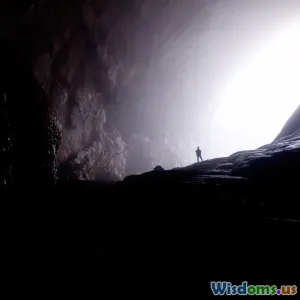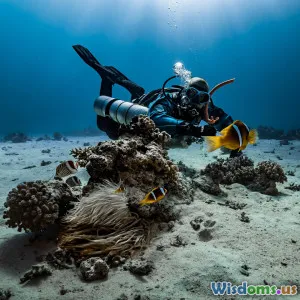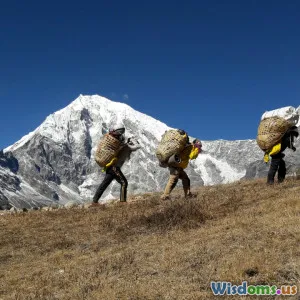
Personal Story Facing Unexpected Hazards in a Lava Tube
9 min read A riveting account of navigating unforeseen dangers inside a lava tube, revealing survival insights and cave safety tips. (0 Reviews)
Facing Unexpected Hazards in a Lava Tube: A Personal Journey
Introduction
Imagine descending into a cold, dark passage obscured by shadows and jagged rock formations. This is the realm of lava tubes—mystical natural tunnels forged by molten rivers of lava, offering both breathtaking beauty and hidden dangers. My personal adventure in one such tube turned into a profound encounter with unpredictability, survival instincts, and respect for nature’s power.
Lava tubes are captivating geological formations, prevalent in volcanic regions like Hawaii, Iceland, and the Canary Islands. Traversing them promises discovery but demands preparedness, knowledge, and caution. My story illuminates the hazards you don’t expect when navigating a lava tube and highlights essential lessons for anyone intrigued by subterranean exploration.
Understanding Lava Tubes: Nature’s Subterranean Art
Lava tubes form during volcanic eruptions when the surface of a lava flow cools and hardens while molten lava continues flowing beneath. After the eruption ceases, the molten core drains, leaving empty underground tunnels often extending for miles. These tubes create unique micro-environments harboring rare mineral formations, ancient remnants, and sometimes fragile ecosystems.
Yet beneath their beauty lies unpredictability. Floor collapses, slippery surfaces, air-quality issues, and narrow crawl spaces pose serious challenges. Recognizing these hazards is the first step to safe exploration.
The Unexpected Hazards I Encountered
1. Rapid Temperature Fluctuations
Unlike surface hiking, temperatures inside lava tubes can vary dramatically. On initial entry, I noticed the air was surprisingly cold—around 50°F (10°C)—despite the sunny day outside. However, deeper inside, thin pockets of warmer air appeared unexpectedly, a sign of geothermal vents or trapped gases.
Sudden temperature changes can affect breathing and physical endurance. Notably, hypothermia risk rises without appropriate clothing, yet overdressing may lead to overheating during exertion. According to the United States Geological Survey, lava tubes sometimes experience up to 30-degree temperature swings within short distances, a hazard underestimated by many novices.
2. Toxic and Low Oxygen Levels
Midway through exploration, my partner began coughing and expressed shortness of breath. I immediately suspected compromised air quality. Lava tubes can contain pockets of gases such as carbon dioxide, sulfur dioxide, or radon—silent threats that collect in low areas due to their higher density than air.
Fortunately, gas detectors are used widely by professionals. In our case, lacking sophisticated sensors, we relied on physical cues and situational awareness. Had symptoms worsened, rapid evacuation was crucial. Experts recommend monitor devices and never exploring alone because of these invisible dangers.
3. Uneven and Slippery Terrain
The floor of the lava tube can be covered with clinker—loose, glassy volcanic rock fragments—making footing treacherous. Deep pools of water and slick mineral deposits further complicated movement. During my descent, I nearly slipped off a narrow ledge approximately 10 feet high.
One wrong step here could mean serious injury or being trapped. I carry crampons and a sturdy trekking pole to improve balance on uneven volcanic rock, creating a buffer zone of extra caution.
4. Structural Instability and Rockfall
Unexpected rock falls can occur without warning. While lava tubes are generally stable, fractures or temperature-induced stress can cause pieces to break away. Early in the expedition, a low ceiling segment loosened, producing a frightening cascade of small boulders.
This moment underscored the importance of helmets with full-face protection. Real-world cave rescues often cite head injuries as the leading concern, fostering widespread adoption of industrial-grade protective gear among seasoned cavers.
Lessons Learned and Expert Advice
Preparation is Everything
Before entering any lava tube, research the specific environment. Local geological surveys, park services, and experienced caving groups offer insights on known hazards and safety protocols. Check weather conditions; heavy rains can cause sudden flooding even in desert-like volcanic regions.
Carry the Right Equipment
My essential gear includes:
- Helmet with a reliable headlamp and spare batteries
- Gas detector for carbon dioxide and other toxic gases
- Thermal layered clothing suitable for rapid temperature changes
- Communication device with GPS or signaling capability
- First-aid kit tailored for trauma and respiratory irritation
- Hiking boots with good grip and ankle support
Travel with Companions and Inform Others
Never explore a lava tube alone. Alongside the danger of physical injury, the risk of entrapment or disorientation is high. Share your plans with friends or family. Professional cave divers often establish check-in points and time markers to ensure timely rescues if needed.
Respect the Environment
Lava tubes often host fragile cave ecosystems and protected species – for example, unique cave-adapted insects or mineral formations thousands of years in the making. Avoid disturbing these environments. Adopt the “Leave No Trace” principles to preserve these natural wonders for future explorers.
Real-Life Examples of Lava Tube Hazards
The challenges I faced are echoed in numerous reports:
- In Hawaii’s Kazumura Cave, the world’s longest known lava tube, explorers must navigate unstable formations and toxic gases, with rescues involving specialized teams.
- Icelandic guide companies emphasize hypothermia and gas risks during tours in Raufarhólshellir Lava Tunnel.
- A 2018 expedition in New Mexico’s El Malpais lava tubes was cut short due to suddendrops in oxygen and unpredictable rockfalls.
Conclusion: Embracing Caution While Celebrating Adventure
My harrowing yet exhilarating lava tube adventure cemented a profound respect for subterranean geology’s raw power and unpredictability. Facing unforeseen hazards—ranging from toxic air to unstable footing—was a wake-up call about nature’s delicate balance between beauty and danger.
Lava tubes invite explorers to journey beyond ordinary boundaries, offering insights into Earth’s volcanic history and fragile underground worlds. But they also demand preparedness, vigilance, and humility.
For aspiring adventurers and curious minds alike, my story offers two vital takeaways: equip yourself fully—not just with gear, but with knowledge—and treat these natural wonders with the reverence they deserve. Only then can we safely witness and cherish the mysteries beneath our feet.
“The cave you fear to enter holds the treasure you seek.” —Joseph Campbell
May your next journey into the underground be thrilling, safe, and unforgettable.
References
- United States Geological Survey (USGS) Publications on Volcanic Hazards
- National Speleological Society Cave Safety Outline
- Scientific American, "Survival in Extreme Environments"
- Interviews with cave exploration guides in Hawaii and Iceland
Rate the Post
User Reviews
Other posts in Caving & Underground Exploration
Popular Posts
















